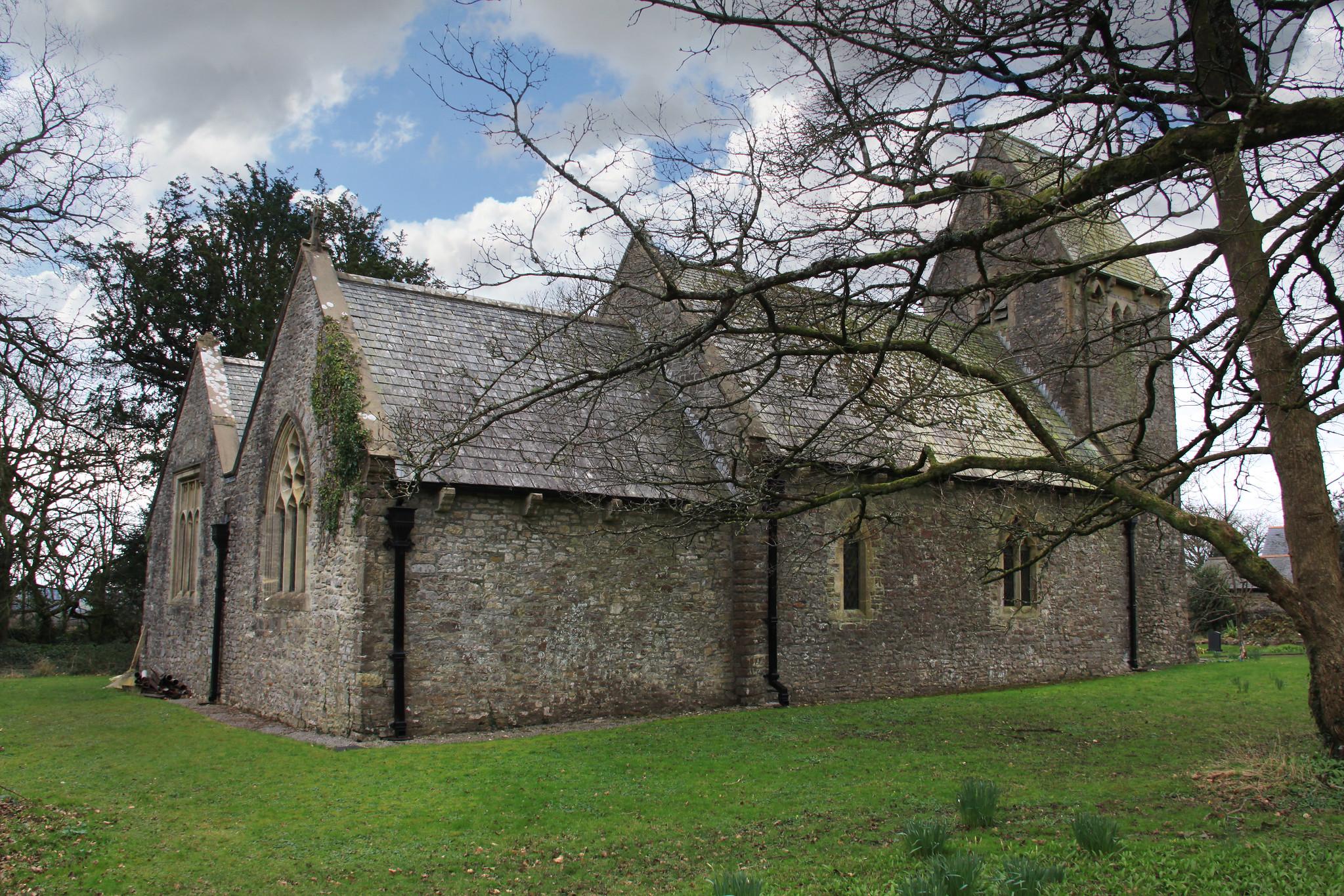St Nicholas
St Nicholas, Glamorgan
The resting place of three Welsh families; 'Makers of Nations'.

St Bleddian's is an ancient, rural church on the outskirts of Cardiff with a Norman font decorated with chevrons and a large addition built in the 1600s.
St Lythans, City of Cardiff
Dedicated to St Bleddian (Bleiddian), also known as Lupus, a bishop of Gaul, brought to Britain to put down widespread heresy in 429AD. He spent much time in South Wales, becoming well loved by the Welsh who gave him the name of Bleddian or Bleiddian meaning 'Little Wolf'.
Nestling in beautiful countryside it is built in the Early English style and dates from the 12th century. It holds a Norman font and was heavily restored by the Victorian architects Prichard and Seddon in 1861. It still retains some medieval glass and a medieval stoop for holy water.
The church consists of a chancel with south chapel, nave, south porch and a western tower containing one bell. The chancel arch is fairly wide and plain pointed. Above the chancel arch are two stone corbels which supported the rood loft. The east window is a 19th century insertion of three trefoiled lights with 14th century style reticulated tracery in the head surmounted by a dripstone with foliated label stops. The chancel has a wagon roof with carved bosses and around the wall plate are 8 shields on which are engraved the symbols of the 4 Evangelists and the symbols of the Passion of Our Lord.
The church houses a large Tudor south chapel, the 'Button Chapel', built in the Perpendicular style on the south side of the chancel, but is quite out of proportion to the rest of the church. It is divided from the chancel by an arcade of two flat segmental arches springing from a massive central oval pier with similar enormous responds. It is an architectural feature which is unique in the Vale of Glamorgan. The chapel was erected as the burial place for members of the Button family.
The Norman font is barrel shaped and decorated with six rows of large chevron moulding in a continuous pattern. The tower opens to the nave by a plain pointed arch similar to the chancel arch.The archway is filled with a panelled oak partition with a trefoiled headed light which still contains some medieval stained glass. The tower is capped by a saddle back roof, so familiar to the Vale of Glamorgan.
The church is surrounded by a beautiful large churchyard, enjoying far reaching views, believed originally to be a pagan site of worship.
St Nicholas, Glamorgan
The resting place of three Welsh families; 'Makers of Nations'.
St Andrew Major, Glamorgan
St Andrew's church, one of Glamorgan's top ten churches to visit.
Ely, City of Cardiff
A remarkable church, its rather drab exterior hides a beautiful interior, with high vaulted apses, beautiful stained glass windows and numerous memorials, including the WW2 memorial for the fallen from Ely.